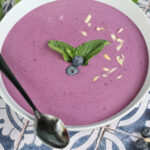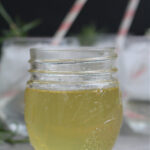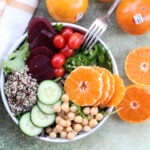Place the shrimp in a large mixing bowl and add 1 tablespoon of the olive oil, the lime zest and juice, garlic, hot sauce, and salt. Toss until well-coated. Allow the shrimp to marinate while you prepare the lemongrass vinaigrette.
In a food processor, add the rice vinegar, soy sauce, ginger, lemongrass, honey, and toasted sesame oil. While pulsing, drizzle in the remaining 6 tablespoons of olive oil. Season to taste with salt and additional honey.
Preheat a grill or grill pan to medium-high. Add the shrimp in a single layer and grill until lightly charred and opaque, about 2 minutes per side.
In a large mixing bowl, combine the cabbage, carrots, and dragon fruit. Drizzle in the dressing (a few tablespoons at a time) and toss the salad until the veggies are saturated to your liking.
Gently toss in the microgreens, cilantro, and mint and then divide the salad among 4 plates. Top with even portions of the grilled shrimp and serve.
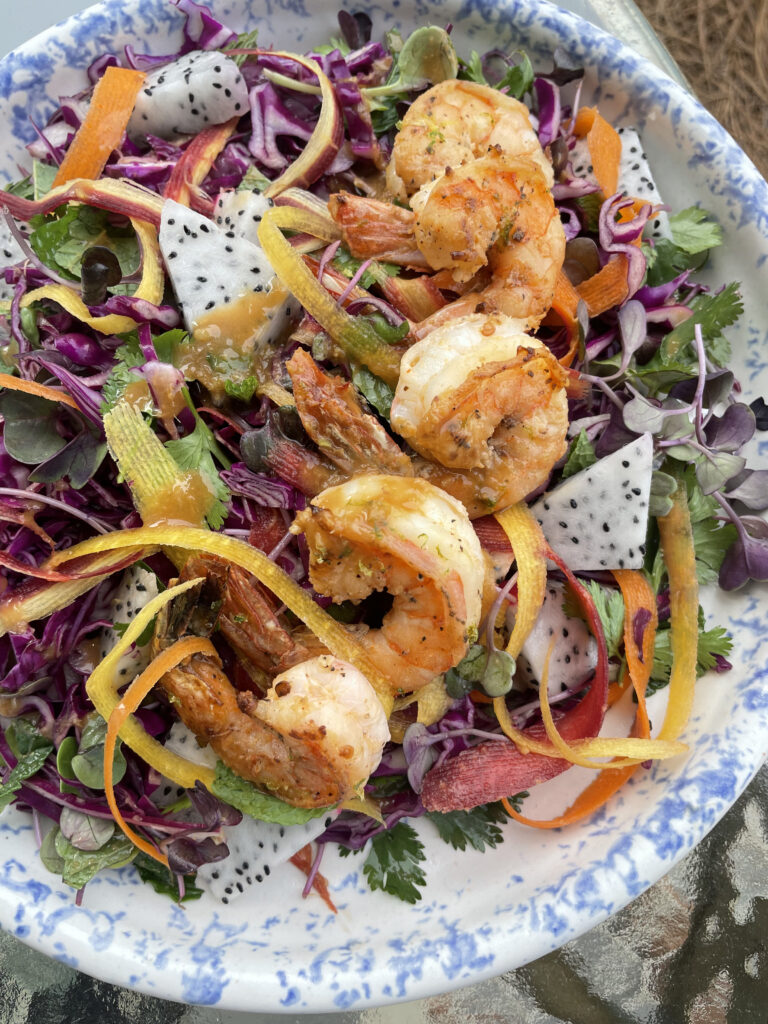
A Memorable Mouthful
There’s a beloved children’s book entitled, Dragons Love Tacos, which—despite its whimsical premise—raises an interesting question: who doesn’t love tacos? But it got me thinking, if dragons have a fondness for tacos, could they also have an affinity for dragon fruit? After all, it bears their name, but are dragons partial to spicy flavors due to their fire-breathing nature, or are they open to embracing nutritious, fiber-rich foods as well?
Let’s explore.
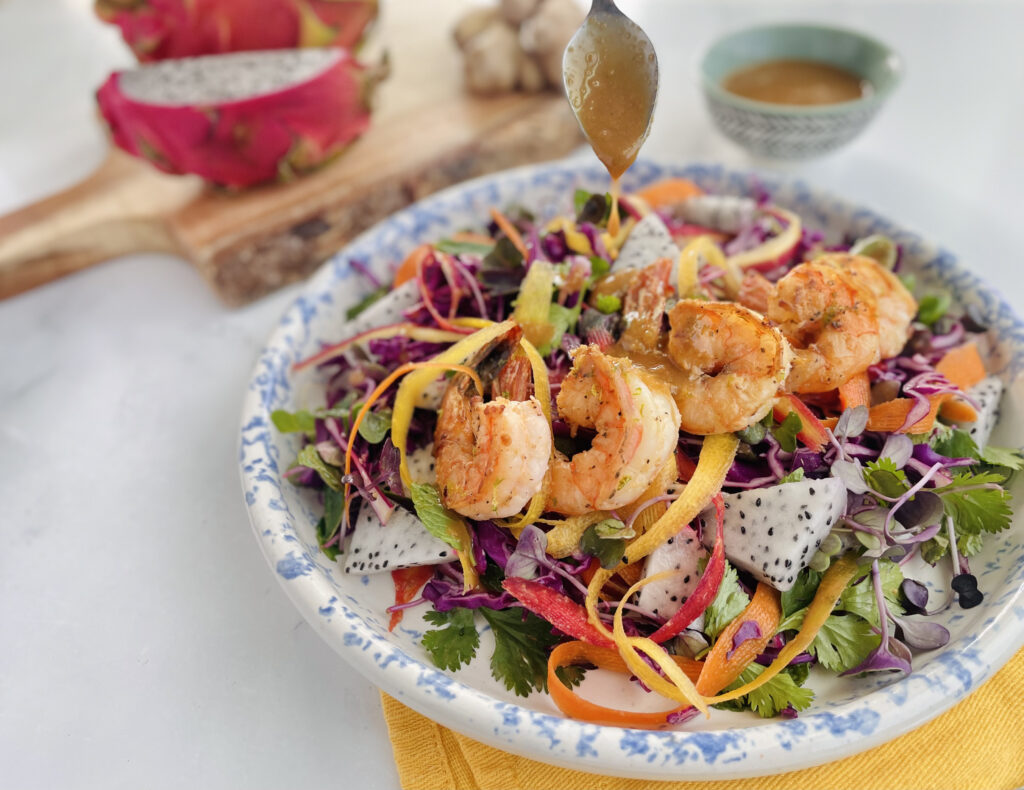
If you, like many humans (and perhaps a few dragons) are unfamiliar with the oblong, spiky-looking fruit also known as “pitaya” from the Cactaceae (cactus) family—let’s start with the basics. Although native to Central America, dragon fruit is now cultivated in various tropical regions worldwide. The three varieties are the red-skinned with white flesh, red-skinned with red flesh, and yellow-skinned with white flesh. The red and white share an almost identical exterior, while the yellow shines all on its own.
The red dragon fruit, with its intense, vibrant exterior, gets its color from betacyanin—a natural pigment also found in beets and red cabbage.
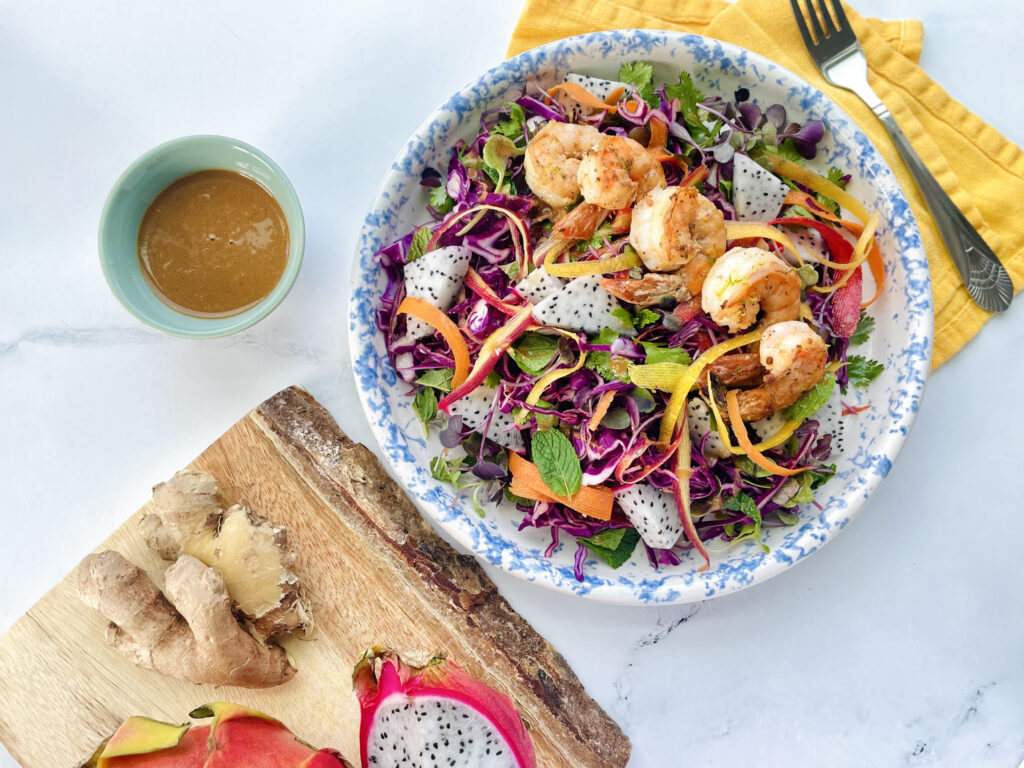
A far cry from artificial red dye 40 you’ll find on dozens of nutrition labels throughout the grocery store.
Just sayin’.
Although the red-fleshed variety is visually stunning, it’s the white-fleshed specimen that holds an enchanting secret. Its crimson exterior guards a treasure trove of white snowy pulp, and today’s recipe showcases that beauty in an aromatic, Asian-inspired grilled shrimp salad. In addition to its dazzling appearance, let’s not forget dragon fruit’s numerous health benefits. It’s a rich source of antioxidants, vitamin C, and B vitamins, which are essential for maintaining a healthy immune system, promoting skin health, and supporting proper nerve function.

The white-fleshed dragon fruit offers a mild, floral flavor reminiscent of kiwi and pear. Its subtly sweet profile and refreshing tropical undertones make it the perfect partner for Asian ingredients like ginger, toasted sesame oil, and bright, citrusy lemongrass.
If you’re wondering how to tackle this peculiar fruit, fear not—it’s simpler than it seems. Just glide a sharp chef’s knife lengthwise through the middle of the dragon fruit and peel it apart to reveal the speckled white flesh. Don’t underestimate those tiny black seeds; they’re entirely edible, provide a pleasing crunch, and are packed with nutrients like healthy fats and fiber.

Using a spoon or your knife, separate the flesh from the skin as you would with an avocado. Now you can slice, dice, chop, freeze, or, my personal favorite, layer atop a bed of red cabbage, rainbow carrots, and smoky shrimp, then drizzle with homemade lemongrass vinaigrette.
You know, the more I contemplate it, the more convinced I am that dragons would eagerly devour this delightful meal. I even sense a potential sequel to the original book. “Dragons Love Grilled Shrimp & Dragon Fruit Salad with Lemongrass Vinaigrette” might be a mouthful of a title, but then again—so is this dish.


